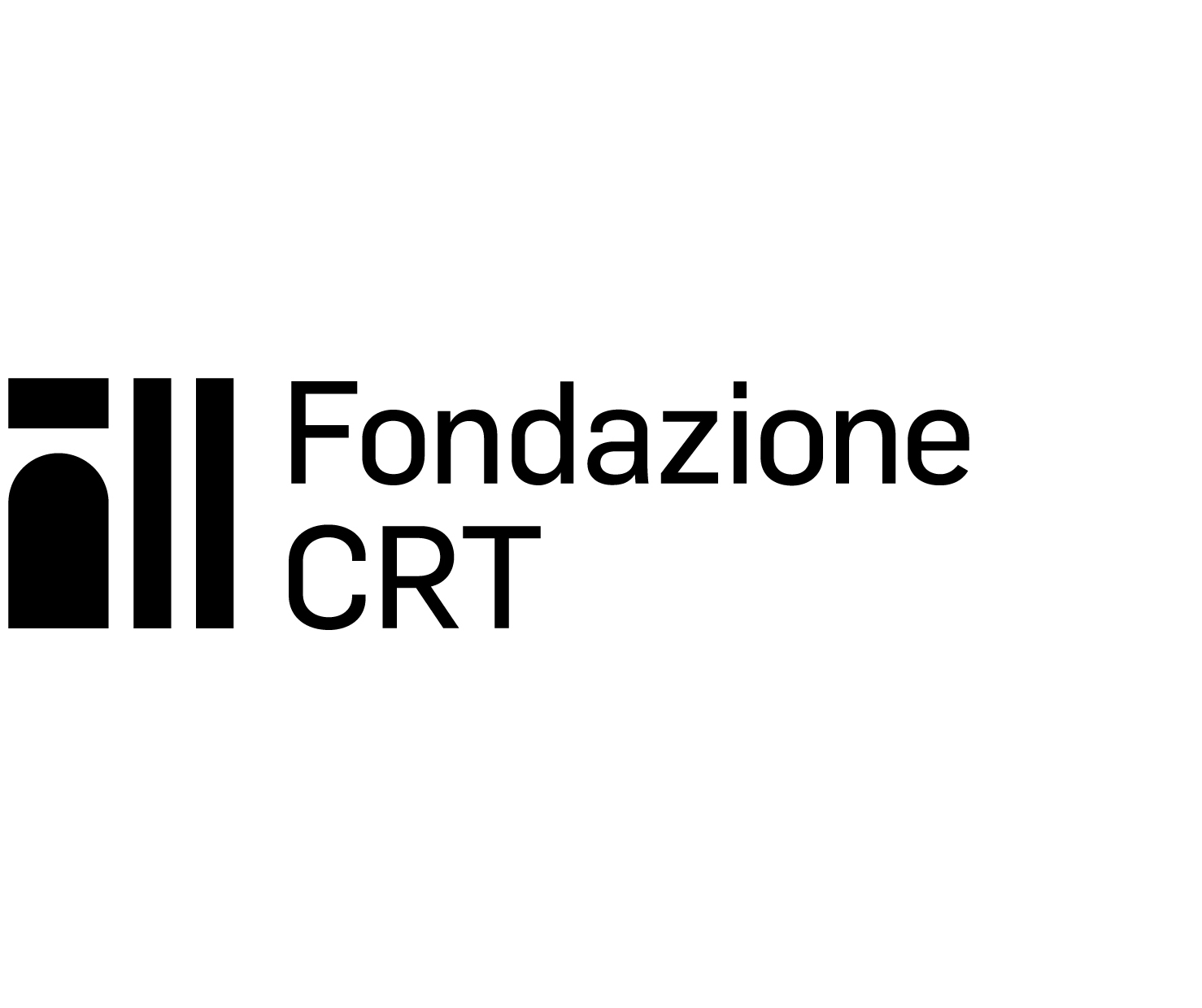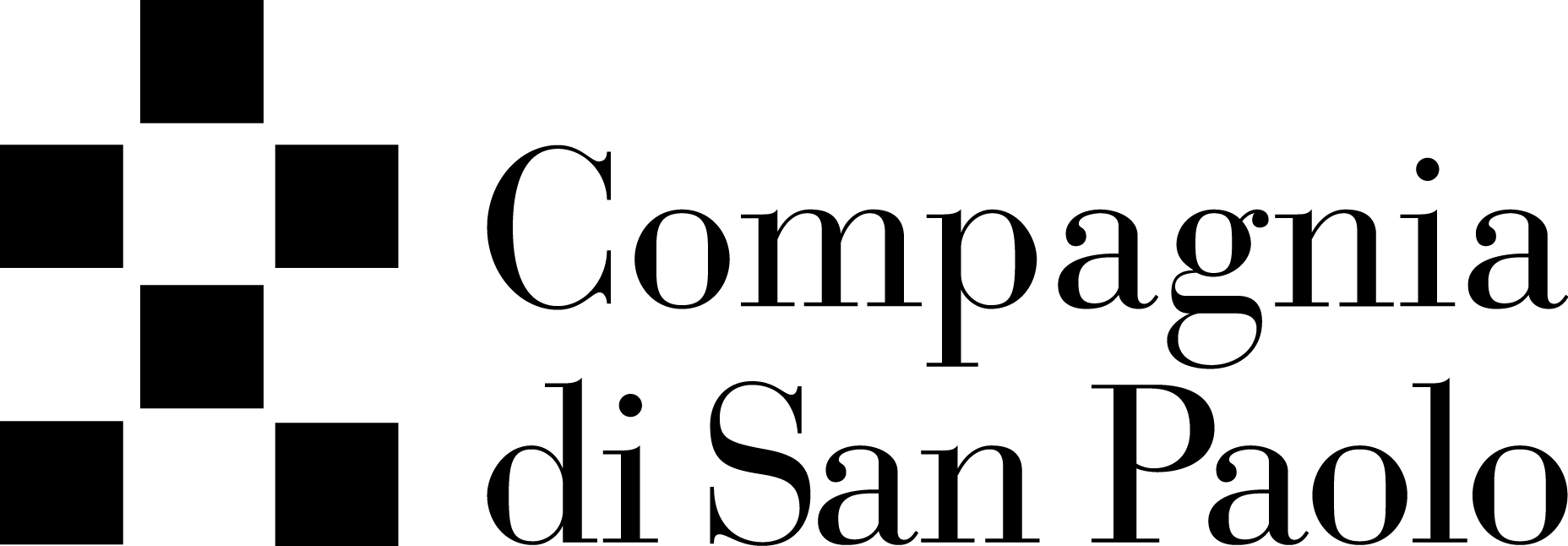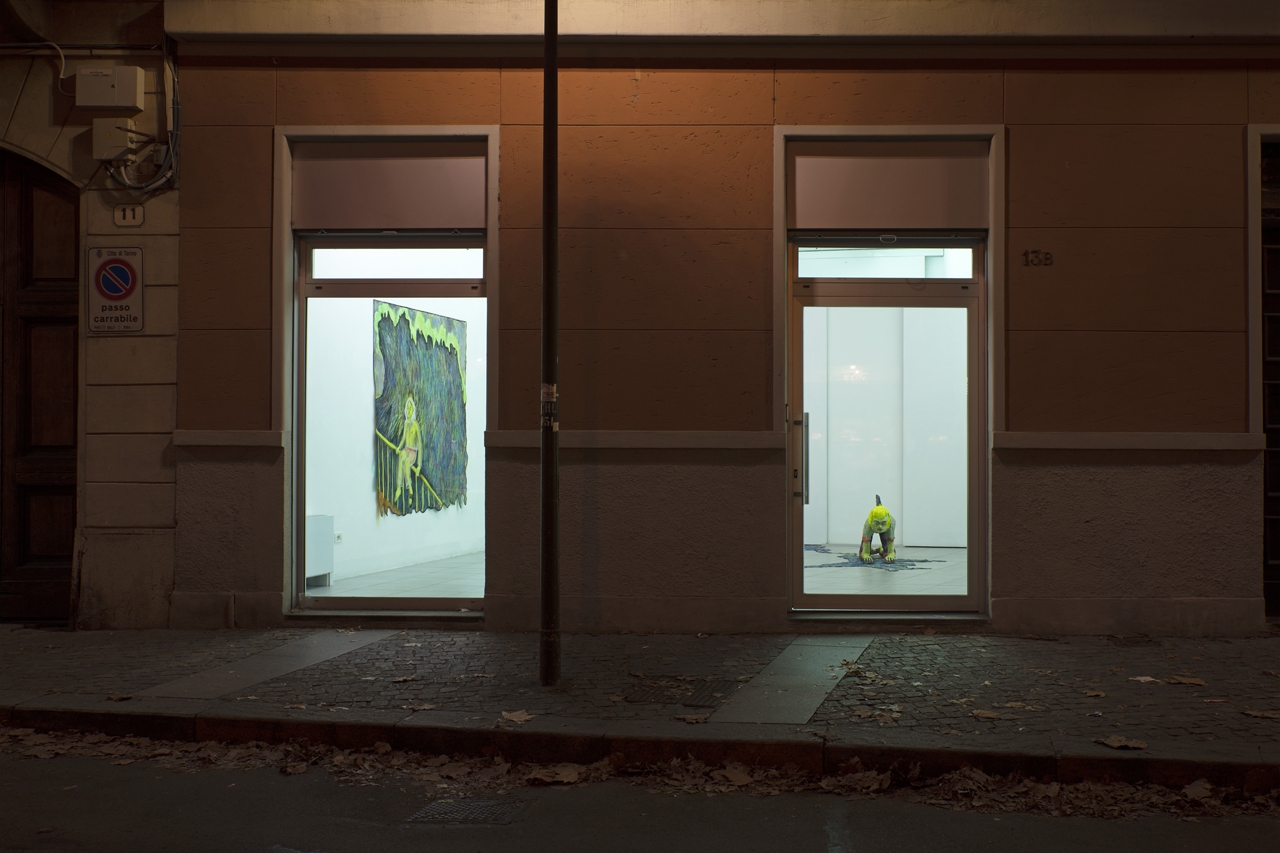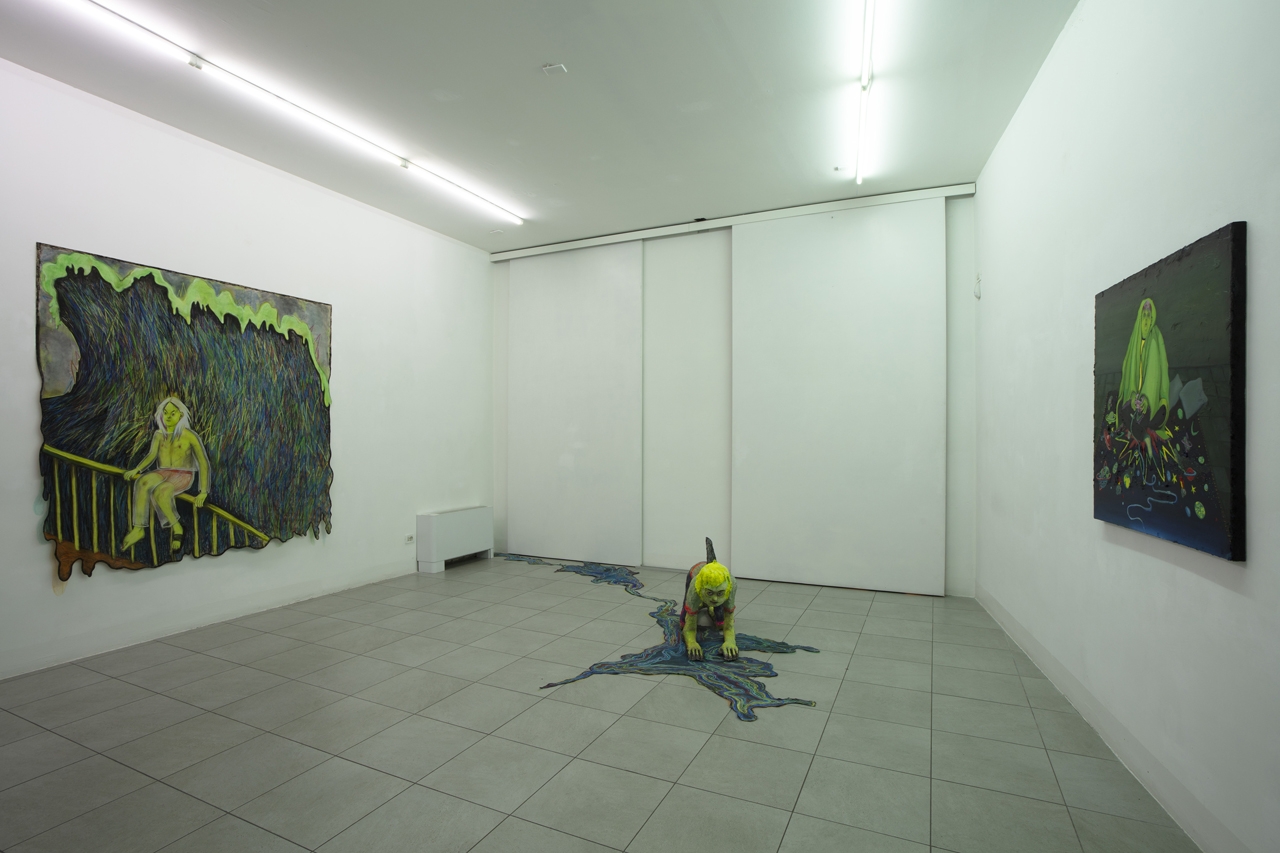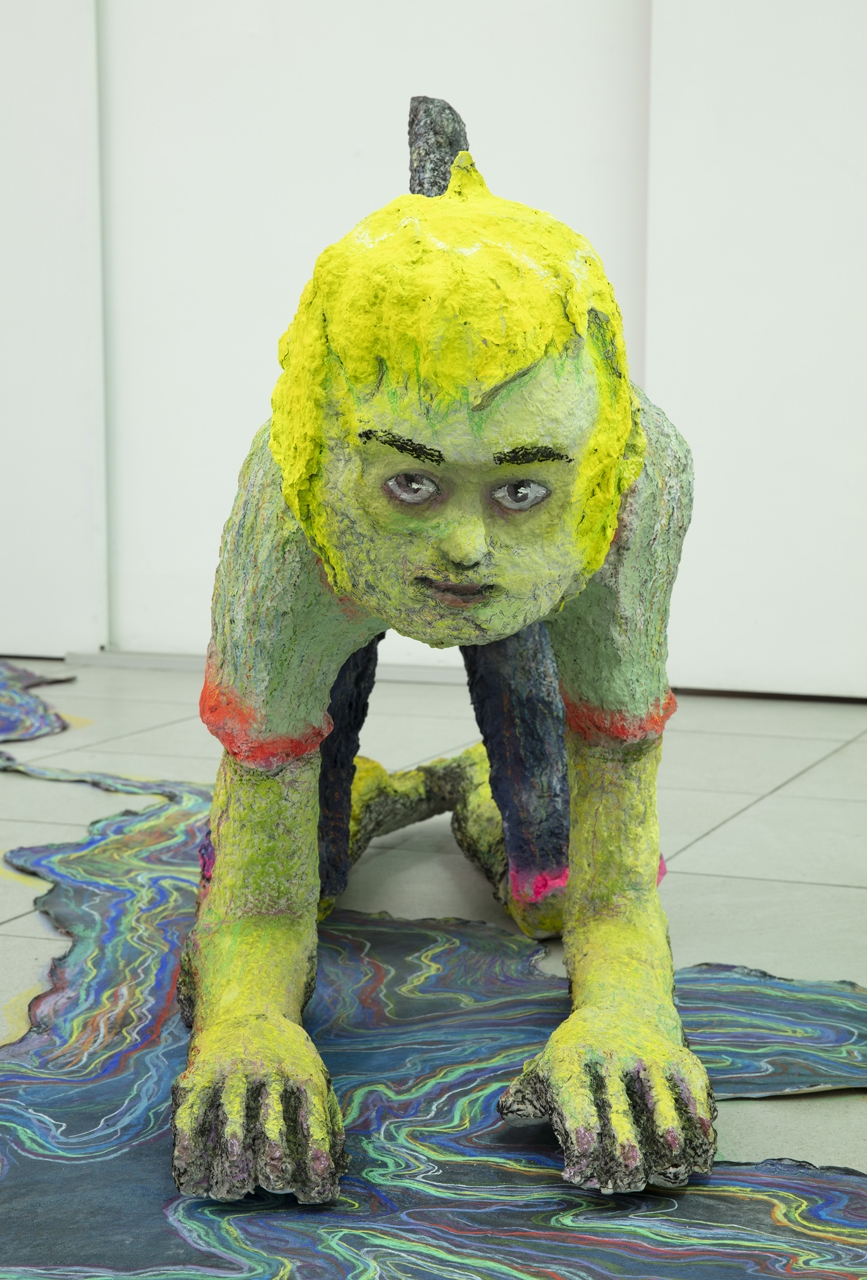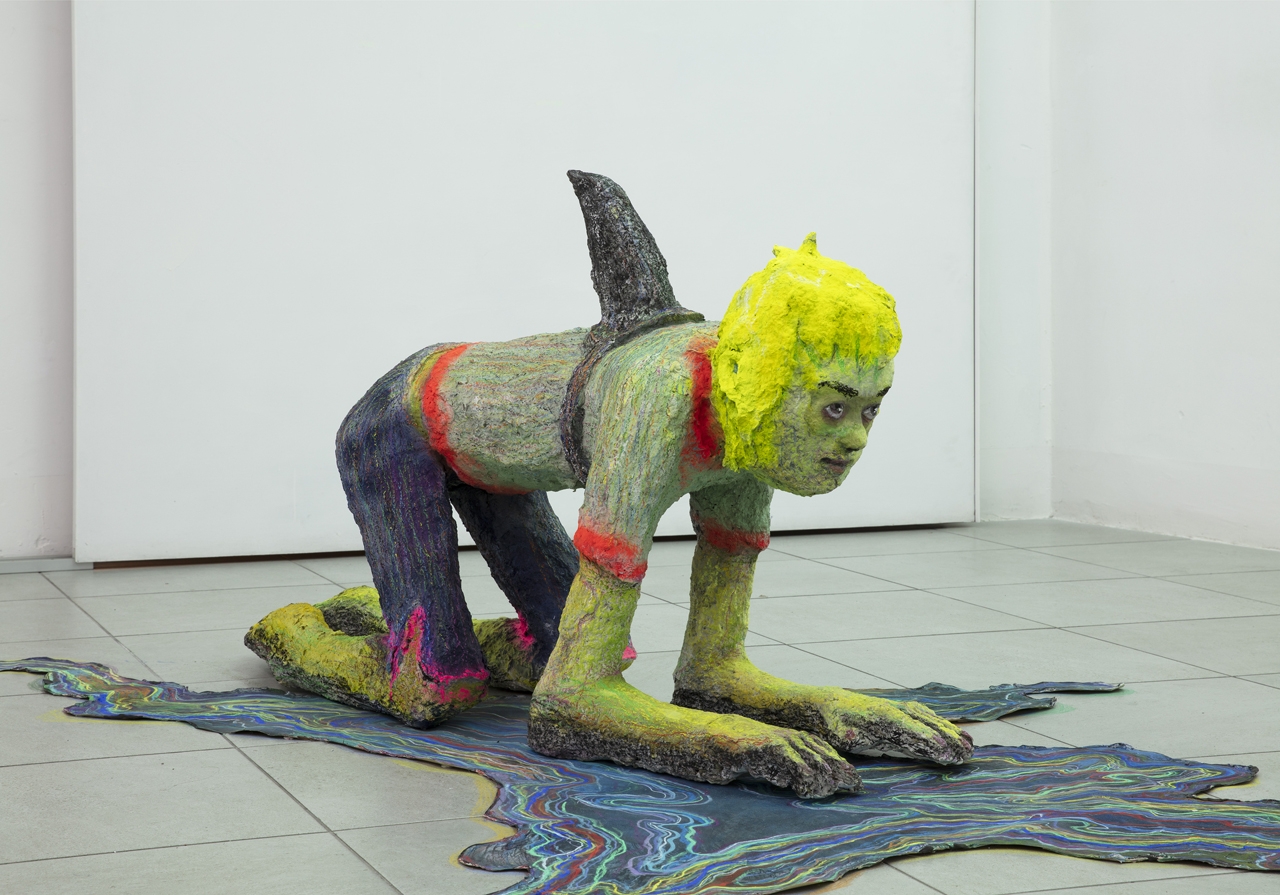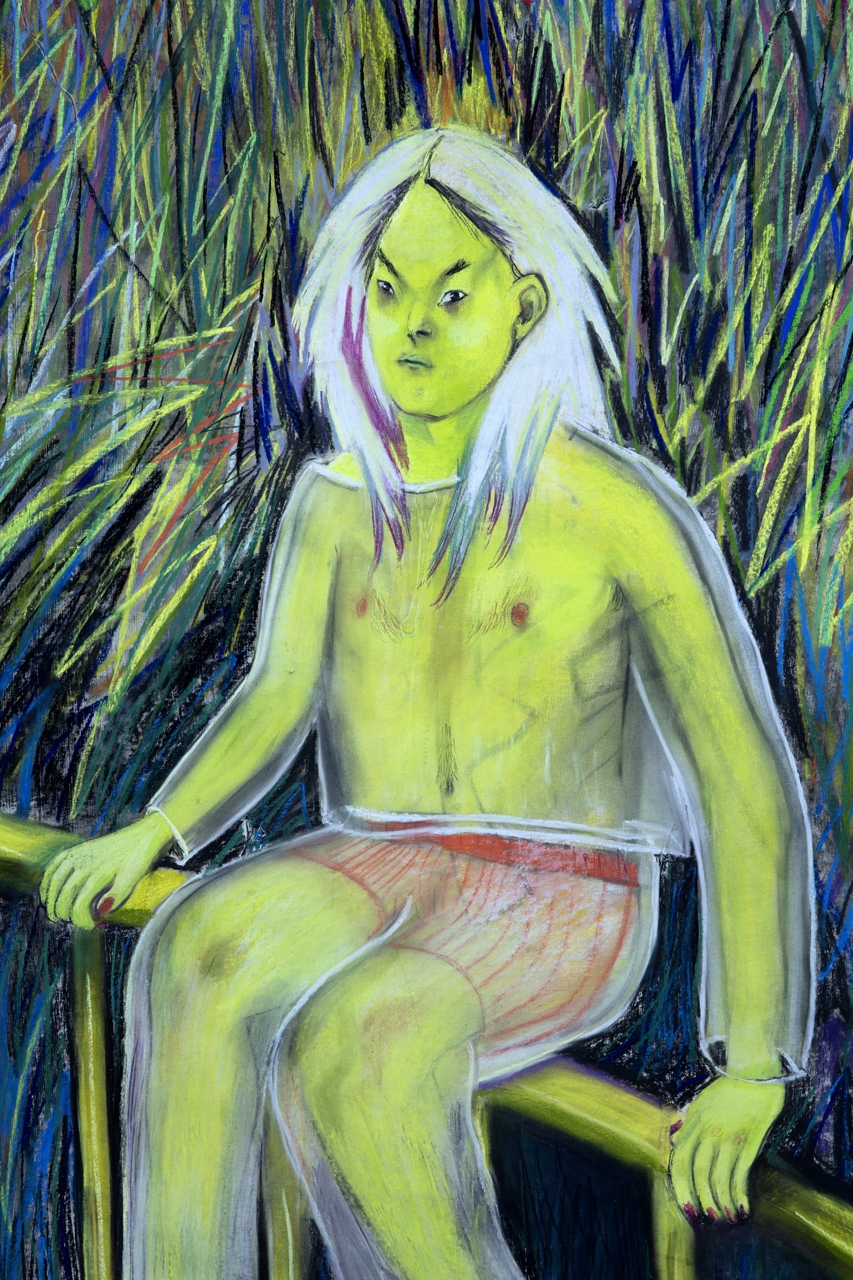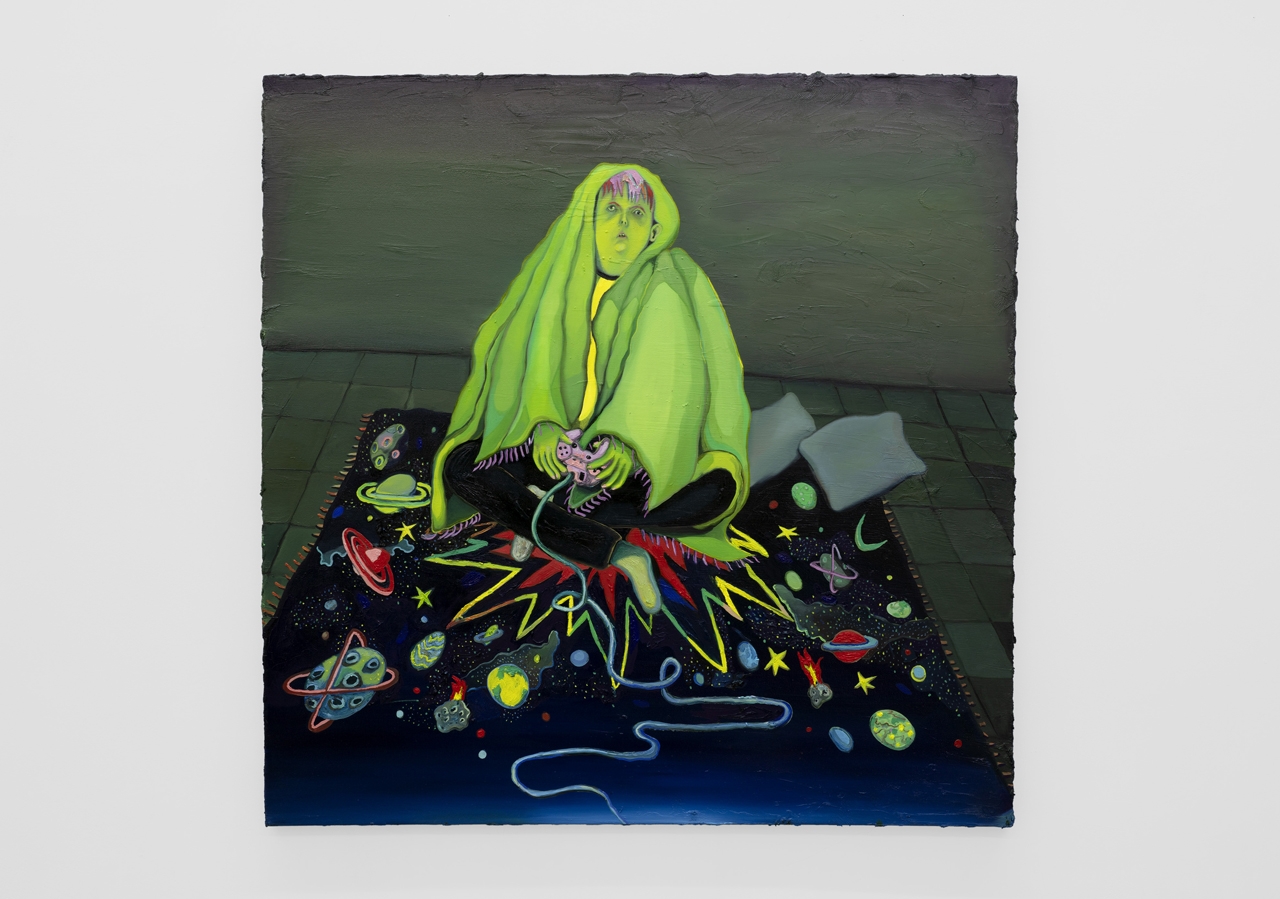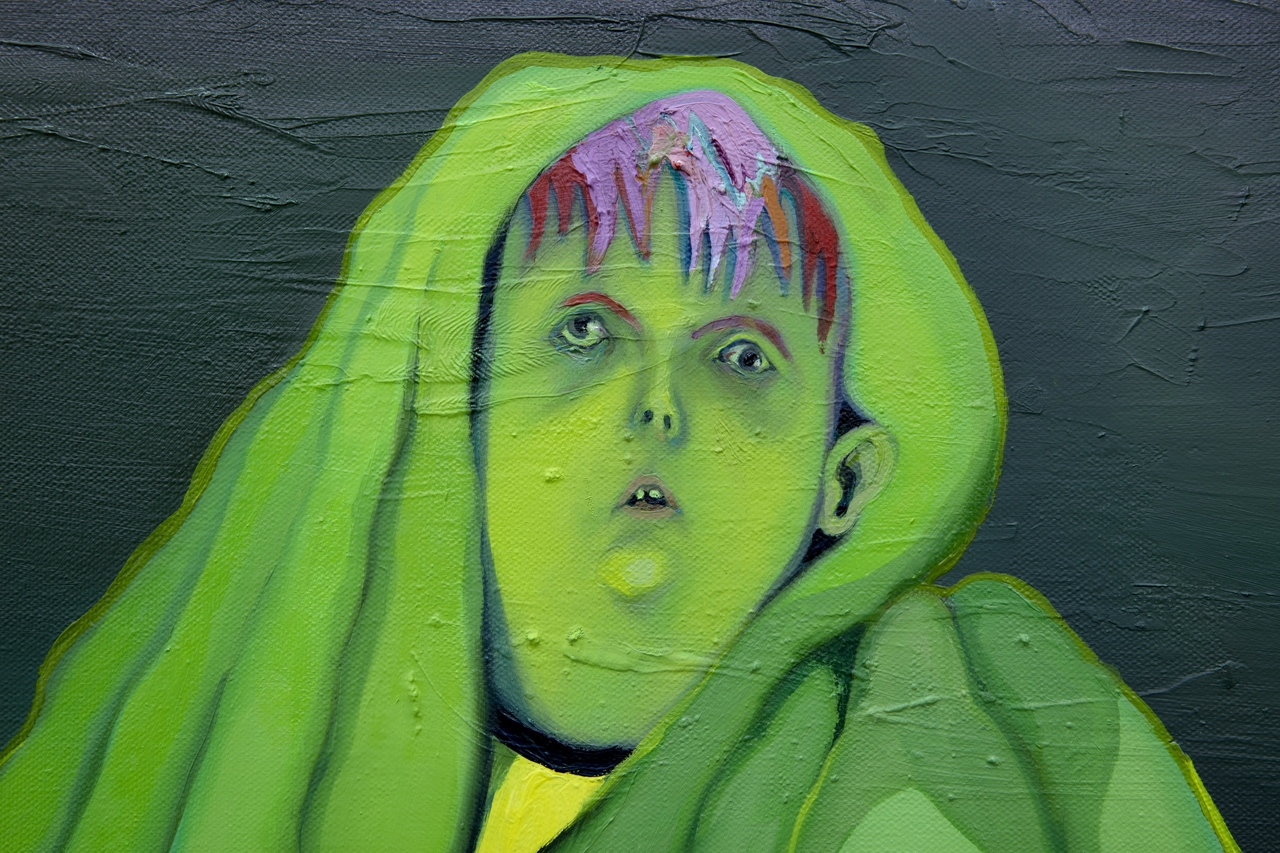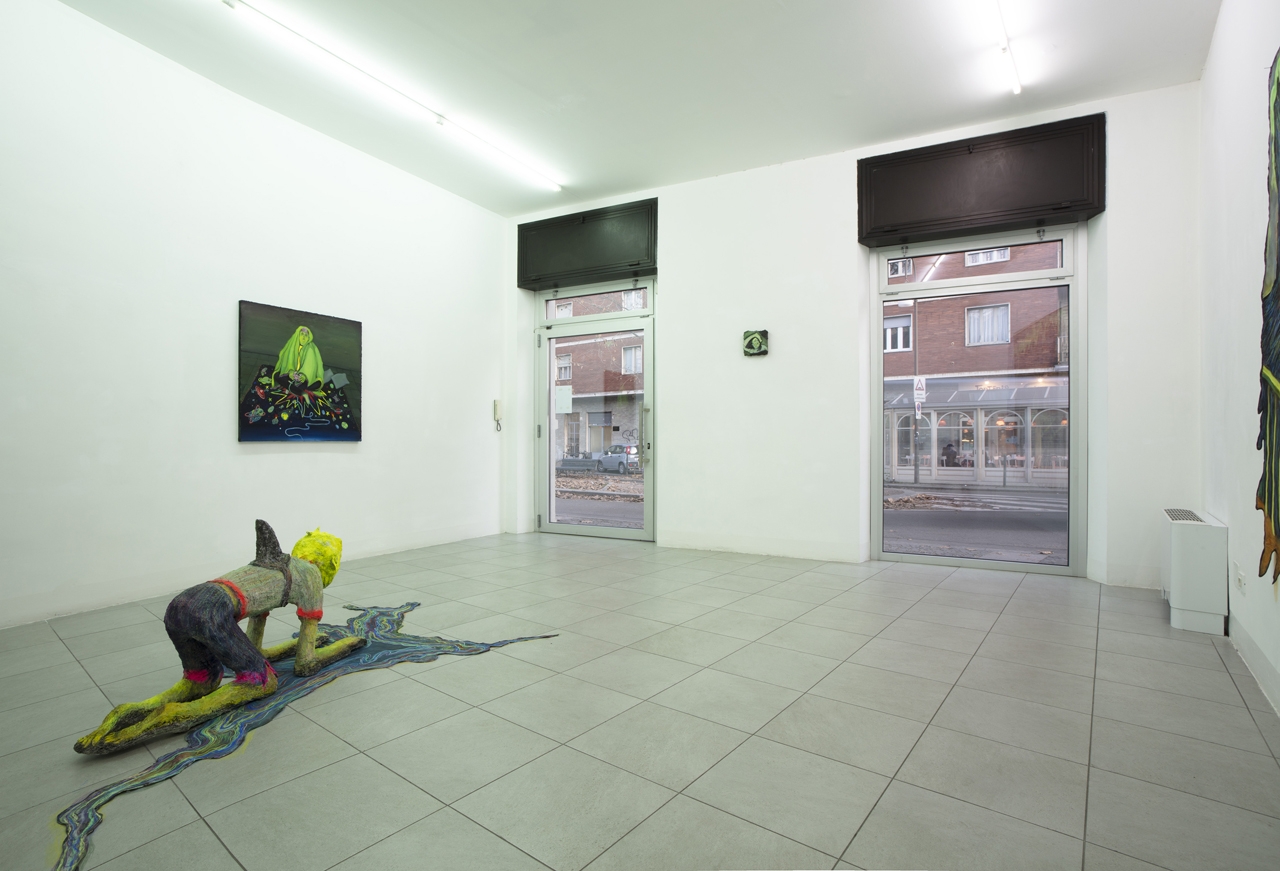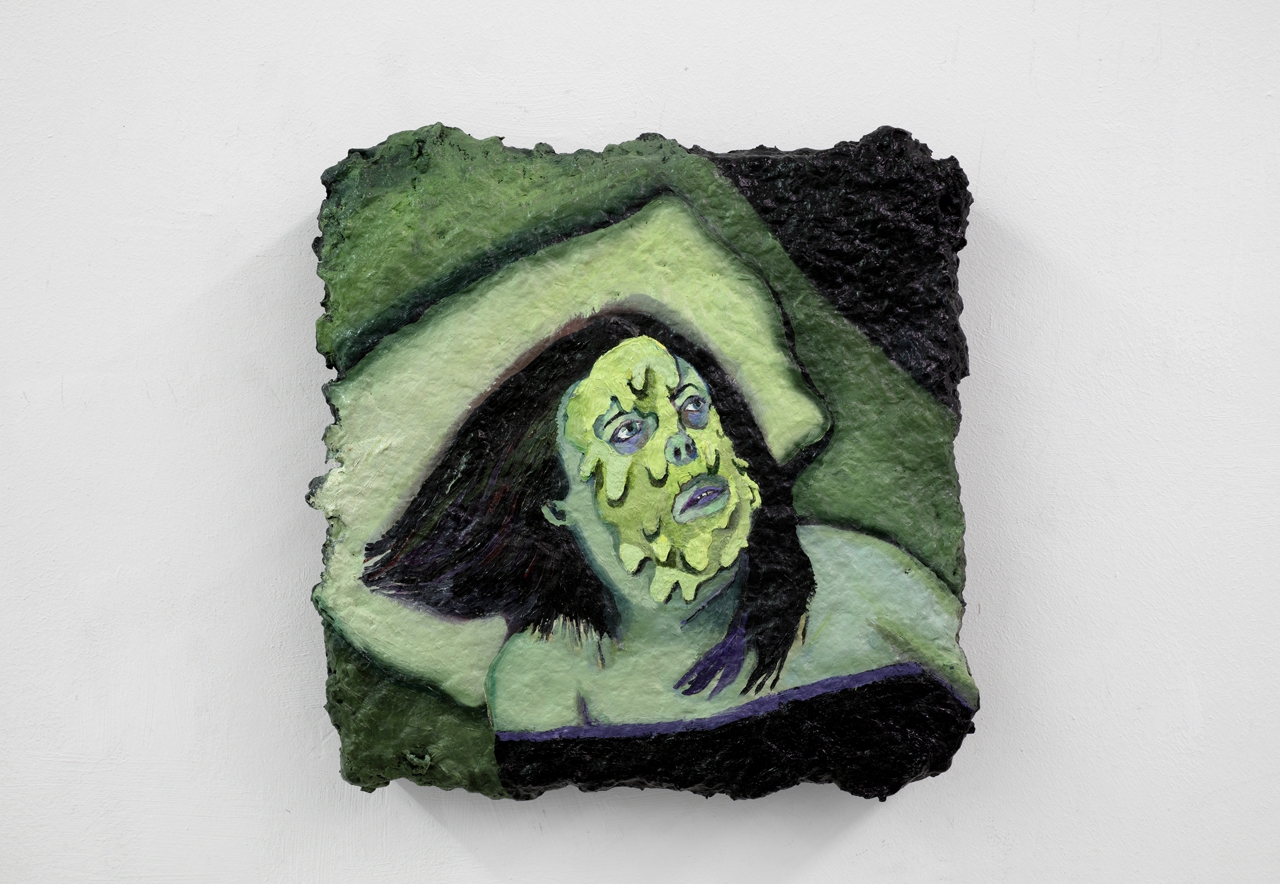Giuliana Rosso
He Heard with His Dead Ear04—20 December 2019
Opening: 3 December, 7pm
He Heard with His Dead Ear is a solo exhibition by Turin-based artist Giuliana Rosso, part of the programme at ALMANAC INN dedicated to show the artistic practice of young Italian artists.
The exhibition is introduced by a text by Matteo Mottin.
A kid, sitting on a fence, gives his back to a giant wave that is about to sweep him away. Opposite, a child wrapped in a blanket, sitting on a carpet with prints of planes, lets the controller of a video game slip out of his hands. Between the two, another child, on hands and knees, the fin of a shark on his back. Behind us, a girl lying on a pillow, on her face a beauty mask that looks like a pancake.
In addition to an attitude of passivity towards what surrounds them, the subjects of Giuliana Rosso's works for "He Heard with His Dead Ear" share a mysterious duplicity of the gaze. There is something in their eyes, a passage from anger to disenchantment, something that makes their intentions difficult to interpret, and perhaps it is precisely that something that alienates them and distracts them from their context, making them absent from the circumstances in which they are immersed.
Perhaps they are all thinking of the same thing, of a story that they heard before, and that suddenly came back to mind, like a bubble of steam rising to the surface, the first sign of an imminent underwater eruption.
The story could be this one:
On August 22, 1570, the Ottomans besieged Famagusta, a fortress city on the eastern coast of the island of Cyprus. To command its defense is the Venetian Marcantonio Bragadin, rector of the city. The Venetian garrison is composed of about 6000 men, while the Turkish army, commanded by Lala Kara Mustafa Pascià, has 200,000 armed men, equipped with 1,500 guns, and supported by 150 ships that block the flow of supplies and reinforcements.
In the same year, in Venice, Titian asks his workshop to prepare a new large canvas and sketches its future composition.
Meanwhile, the resistance of Famagusta continues, despite the disparity of the forces on the ground and the scarce aid from the Venetian Republic. It is not clear why the Serenissima decided not to intervene and help the besieged; it is believed that some Venetian commanders preferred to save military resources to be able then to have the command in the clash after the fall of the city, in the battle of Lepanto.
Once the food and ammunition were over, on 1 August 1571, after almost a year from the beginning of the siege, Bragadin was forced to declare the surrender of the city. The Turkish commander does not comply with the conditions of the surrender contract which allows civilians and soldiers to escape. Bragadin is imprisoned, mutilated (his ears and nose are cut off) and locked for twelve days in a tiny cage left in the sun, with very little water and very little food, subjected to the scorn of the winners. On the fourth day the Turks offer him freedom if he converts to Islam, but Bragadin refuses.
On August 17, 1571 they release him from prison almost lifeless, with severe burns on his body, they hung him on the mast of his ship and massacred him with over a hundred lashes, then forced him to carry on his shoulder a large basket full of stones and sand through the streets of Famagusta, until he collapses. They take him back to the main square of the city, chain him to a column and skin him alive, starting from the head. His dismembered limbs are distributed among the various departments of the army and the skin, filled with straw and sewn up, is covered with military insignia and carried on horseback by an ox in procession through Famagusta, to then be hoisted on the pole of a galley and brought to Constantinople.
The same year, in Venice, Titian learns of the end of Bragadin. He knows that the Republic of Venice will be part of the Holy League and that they will face the Ottoman Empire in Lepanto in October, too late to save his fellow citizen. He looks at the water of the lagoon, then looks up and imagines he intercepts Bragadin's gaze 2300 kilometers away. He can't understand how come his own clients of a lifetime have preferred to let him die in that horrible way. "But who am I to judge these things?" Think about the skin, all the skin he painted, and the skinned one filled with straw at the mercy of the wind on a ship to Constantinople. He remembers Marsia, the satyr skinned alive by Apollo after losing the impossible challenge of a musical contest against him.
In the following five years, until his death, Titian works at the painting. At the center the satyr, hung upside down from a tree, is skinned by two characters while others witness the punishment. None of these, however, realizes that themselves are skinned by the painter's hand, along with everything that appears in the painting. He decides to enter the scene and portray himself as Midas, the king condemned to die of hunger after he was granted the desire of turning everything he touched into gold, and that was judge of the competition between the satyr and Apollo. Him, the painter with the golden touch, in the role of the man who dared to judge a god, judge of his work within the work itself, skinned like the other characters while reflecting on the moral choices of his clients. The only part that spares is the face of Marsia, whose gaze observes the spectator, observes Tiziano, observes the skin of Bragadin and the fleet of the Holy League that in less than half an hour decimates the Turks in front of Lepanto.
In addition to an attitude of aggressiveness towards their surroundings, the subjects of Giuliana Rosso's works for "He Heard with His Dead Ear" share a mysterious duplicity in their eyes. There is something in their eyes, a passage from disenchantment to anger, something that makes their intentions difficult to interpret, and perhaps it is precisely that something that ties them to their context, making them completely masters of the circumstances in which they are immersed.
A kid, sitting on a fence, evokes a giant wave that will break at his command. Opposite, a child wrapped in a blanket, sitting on a carpet with prints of planets, has just set up a new lighting for the space. Between the two, another child, on his back the fin of a shark, swims in this light towards the spectators. Behind us, a girl is getting out of bed, looking at the sea behind us.
Text by Matteo Mottin
ground floor
Via reggio 13
10153 Turin
Giuliana Rosso’s exhibition is supported by Stella Aruanno onlus.
ALMANAC INN is supported by Fondazione CRT and Compagnia di San Paolo.
